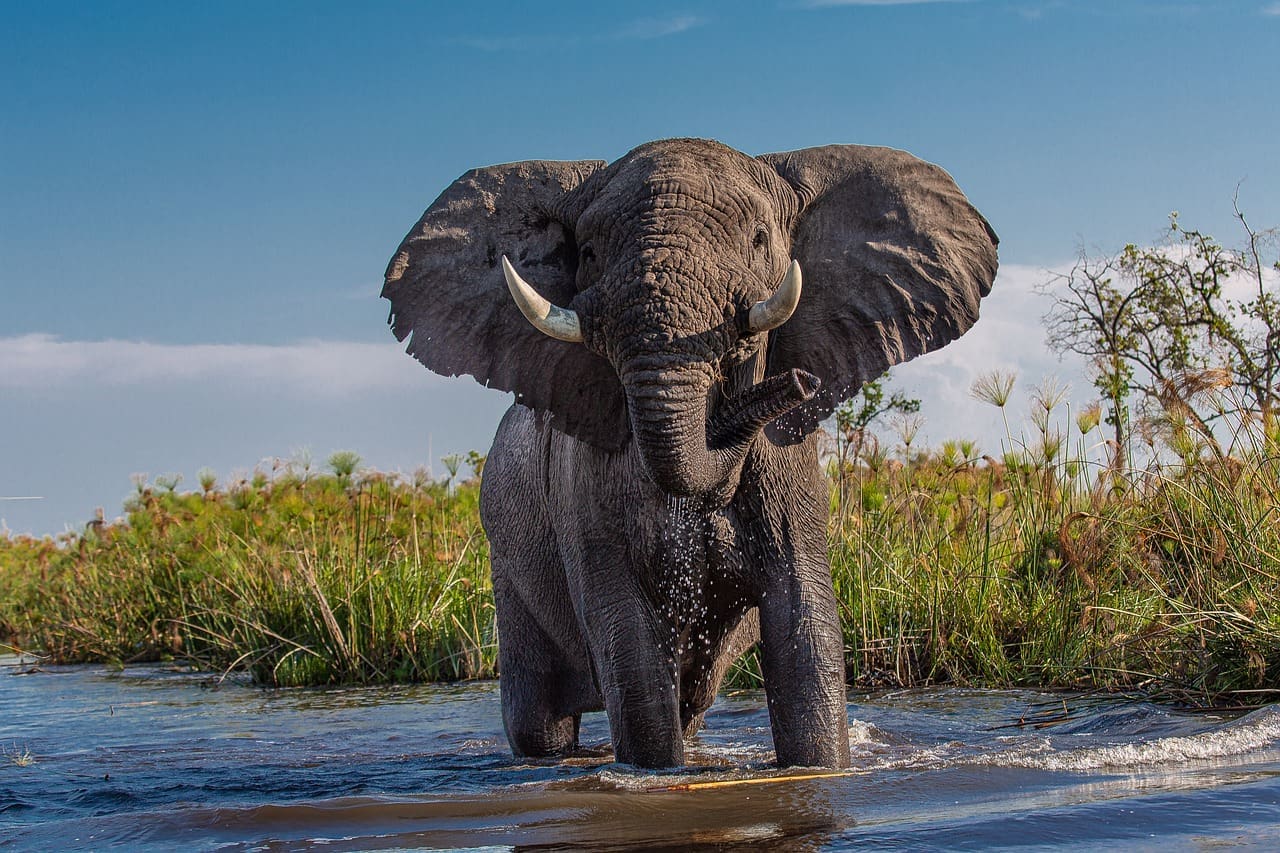[social_warfare]
The Gentle Giants and the Growing Conflict: Elephant Conservation and Human Challenges in Southern Africa
In the expansive wilderness of Southern Africa, the African elephant, a symbol of wildlife majesty and ecological might, roams across national parks and beyond, playing a crucial role in biodiversity maintenance. However, this iconic species, once nearly driven to extinction by poaching and habitat loss, now faces a new set of challenges stemming from its own successful recovery.
As elephant populations increase, particularly in countries like Botswana, which harbors the world’s largest number of these animals, the ensuing human-elephant conflicts pose significant dilemmas for conservationists, governments, and local communities alike.
The Roots of Conflict
Botswana, a country approximately the size of France but with only about two million residents, is home to around 130,000 bush elephants—nearly a third of Africa’s total elephant population. These numbers are both a conservation success and a growing problem. In the vast landscapes where elephants roam, the line between wildlife habitats and human settlements is increasingly blurred. Elephants, in their quest for food and water, often wander into human-populated areas, leading to devastating impacts on crops, property, and sometimes human lives.
The severity of these conflicts is magnified by the elephants’ natural behaviors. These largest land animals on Earth can drastically alter their ecosystems over their 60-year lifespan. With few natural predators, their populations can grow quickly, increasing the frequency of their encounters with humans.
Diplomatic Frictions and Policy Responses
The situation has escalated to the extent of straining international relations. In a stark example, Botswana’s President Mokgweetsi Masisi recently threatened to send 20,000 elephants to Germany as a response to the European nation’s consideration of a ban on the import of elephant parts. This statement highlighted the intense pressure felt by Botswana to find viable solutions to manage its elephant population sustainably while addressing the economic and safety concerns of its citizens.
In response to these challenges, Botswana and other Southern African nations have explored various management strategies, including the controversial practice of trophy hunting. Reintroduced in Botswana in 2019 after a five-year moratorium, trophy hunting is advocated by some as a means to control elephant numbers, generate income for conservation, and support local communities. However, this method is contentious. Critics argue that it is ethically problematic and that it disproportionately benefits wealthy foreign hunters and local elites rather than the broader community.
READ NEXT: GET TO KNOW THE AFRICAN SAVANNA ELEPHANT
Innovative Solutions and Community Involvement
Amid these tensions, conservationists are advocating for innovative solutions that focus on coexistence rather than control. One promising approach is the project led by Lucy King and the Save the Elephants organization, which utilizes beehive fences to deter elephants from entering human settlements. This method harnesses elephants’ natural fear of bees, providing a humane barrier that protects crops and property without harming the elephants. Additionally, the beehives offer the dual benefit of producing honey, creating an economic incentive for communities to maintain and embrace these natural deterrents.
Furthermore, in northern Botswana, the Eco-Exist Project seeks to reduce conflict through strategic planning and community engagement. By identifying and protecting elephant corridors—paths that elephants have historically used to migrate—the project aims to guide elephants away from populated areas. This initiative involves rethinking village layouts and utilizing crops that naturally deter elephants, like chili peppers, to minimize attractions.
Towards a Sustainable Coexistence
The road to resolving human-elephant conflicts is complex and fraught with ethical, environmental, and socio-economic considerations. The challenges are immense, but the pursuit of innovative and humane solutions highlights a shift towards a more ethical approach to wildlife management. This approach recognizes the intrinsic value of elephants beyond their economic and trophy potential. It emphasizes the importance of habitat preservation, the expansion of migration corridors, and the education of local populations on the benefits and methods of coexisting with wildlife.
As we look to the future, the sustainability of Africa’s elephant populations and the safety of its human communities will depend heavily on our ability to implement and support solutions that respect the needs and rights of all beings involved. Through continued research, international collaboration, and local empowerment, there is hope that both humans and elephants can thrive together in this richly biodiverse region.

